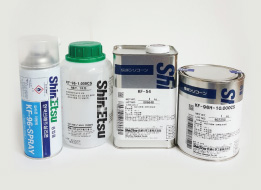 |
 Silicone fluids Silicone fluids
Silicone fluids are generally colorless transparent liquids. They exhibit excellent resistance to heat, cold, and moisture. There is also little viscosity change in silicone fluids over a wide temperature range, and they have outstanding electrical properties. In addition, they are notable for their characteristics of mold-releasability, water repellency, lubricity, and defoaming properties.
Features
ㆍ Heat resistance
ㆍ Cold resistance
ㆍ Viscosity stability
ㆍ Chemical stability
ㆍ Non-corrosive and little effect on other materials
ㆍ Low surface tension
|
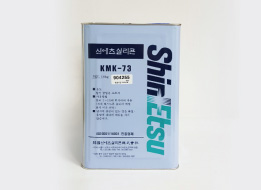 |
 Defoaming agents Defoaming agents
Silicone defoaming agents are available in oil, solution, powder, and emulsion types. They all have a high defoaming effect when added in small amounts to all types of foaming liquids.
Features
ㆍ Defoaming effect
ㆍ Safety
ㆍ Heat resistance and chemical resistance
ㆍ Foam-inhibiting effect
ㆍ Chemical stability
|
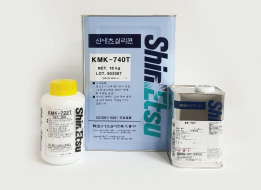 |
 Release agents Release agents
The surface tension of silicone is low and it spreads easily, so it provides good wetting of fine, irregular surfaces. It is chemically inactive and can be used with almost all molding materials. Silicone has excellent heat and cold resistance and offers good performance over a wide temperature range. These characteristics are why silicone is used as a mold-release agent in a range of industries including the rubber industry, resin industry, food processing industry, and die casting. Silicone mold-release agents are available in various forms including emulsions, fluid types, solvent types, bake-on types, and sprays
Features
ㆍ Versatility
ㆍ Mold-releasability
ㆍ Heat and cold resistance
ㆍ Chemical stability
ㆍ Can be used on complex molds
|
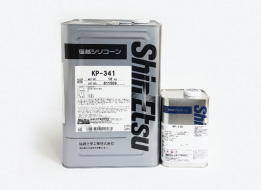 |
 Paint additives Paint additives
Silicone paint additives have very low surface tension. This property makes them very effective when added in small amounts to paints. Silicone paint additives are highly effective for surface modification, and for preventing various paint film flaws.
Features
ㆍ Slickness
ㆍ Forms hammertone finishes
ㆍ Prevent floating and flooding
ㆍ Prevent blocking
ㆍ Defoaming effect
ㆍ Improved resistance to moisture and salt water
|
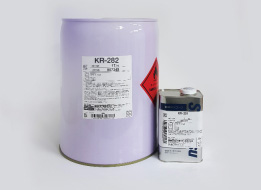 |
 Silicone resins Silicone resins
The molecules of silicone resins have a three-dimensional network structure. Silicone resins are most often used as resins. They produce films with excellent heat resistance, weatherability, dielectric properties and water repellency. In addition, they are available in a range of consistencies, from high-viscosity liquids to solids. Silicone resins are used to make paints and coatings and in electrical and many other applications, where they help to improve durability, safety and reliability.
Features
ㆍ Heat resistance
ㆍ Weatherability
ㆍ Hardness
ㆍ Water repellency
ㆍ Dielectric properties
|
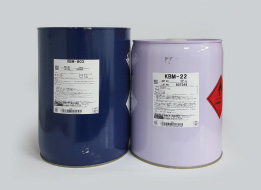 |
 Silane coupling agents Silane coupling agents
Silane coupling agents contain at least two different reactive groups within their molecules. One of these functional groups forms chemical bonds with inorganic materials, and the other forms chemical bonds with organic materials. This property enables silane coupling agents to function as intermediaries in bonding organic materials to inorganic materials, which normally tend not to bond with each other.
Features
ㆍ Higher-quality composite materials
ㆍ Resin modification / Surface treatment |
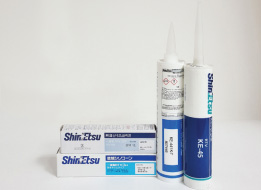 |
 One-component liquid rubbers One-component liquid rubbers
With one-component liquid silicone rubber compounds, work can begin as soon as the product is ejected from its tube or cartridge. These products become elastic rubbers after curing, and adhere well to almost all materials as they cure. These properties make one-component liquid silicone rubbers suitable for a wide range of applications.
Features
ㆍ Electrical properties
ㆍ Heat and cold resistance
ㆍ Impact resistance
ㆍ Weather resistance
ㆍ Workability
|
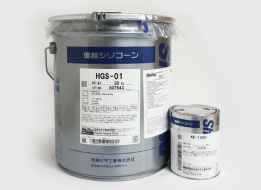 |
 Two-component liquid rubbers(for moldmaking) Two-component liquid rubbers(for moldmaking)
Two-component liquid silicone rubber compounds for moldmaking are suitable for mold masters for molding with polyester resin, epoxy resin, urethane foam, wax, plaster, and low-melt-point metal alloys. These liquid silicone rubber compounds allow accurate reproduction of the shape of the original. They are easy to use and are thus used widely in industrial applications, as well as by hobbyists looking to create the perfect replica.
Features
ㆍ Workability
ㆍ Mold-releasability
ㆍ Dimensional stability
ㆍ Flowability
ㆍ Non-exothermic
|
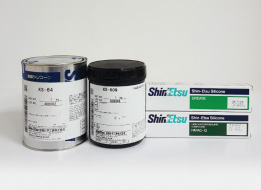 |
 Greases and oil compounds Greases and oil compounds
Silicone greases start with a base oil of silicone fluid, to which are added various additives and fillers (metal soap, etc.). Silicone greases exhibit thermal oxidation stability over a wide temperature range, offer good moisture-resistance, and are used primarily for lubrication.
Silicone oil compounds are products with a grease-like consistency. They are produced by blending materials such as silica powder into a base oil of silicone fluid. They exhibit thermal oxidation stability over a wide temperature range and have outstanding electrical properties and water repellency. Silicone oil compounds are used primarily in electrical insulators and seals, and for heat dissipation and water repellency.
Features
ㆍ Heat and cold resistance
ㆍ Moisture resistance
ㆍ Safety
ㆍ Efficiency
|
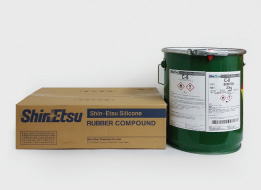 |
 Rubber compounds Rubber compounds
Silicone rubbers have properties of both inorganic and organic materials. They are composed of unique silicone gums and high-purity silica. Silicone rubbers offer many outstanding features not found in other organic rubbers.
Features
ㆍ Heat and cold resistance
ㆍ Weather resistance
ㆍ Oil resistance, solvent resistance, chemical resistance
ㆍ Electrically insulative
ㆍ Compression set
ㆍ Transparency and coloring
|



















